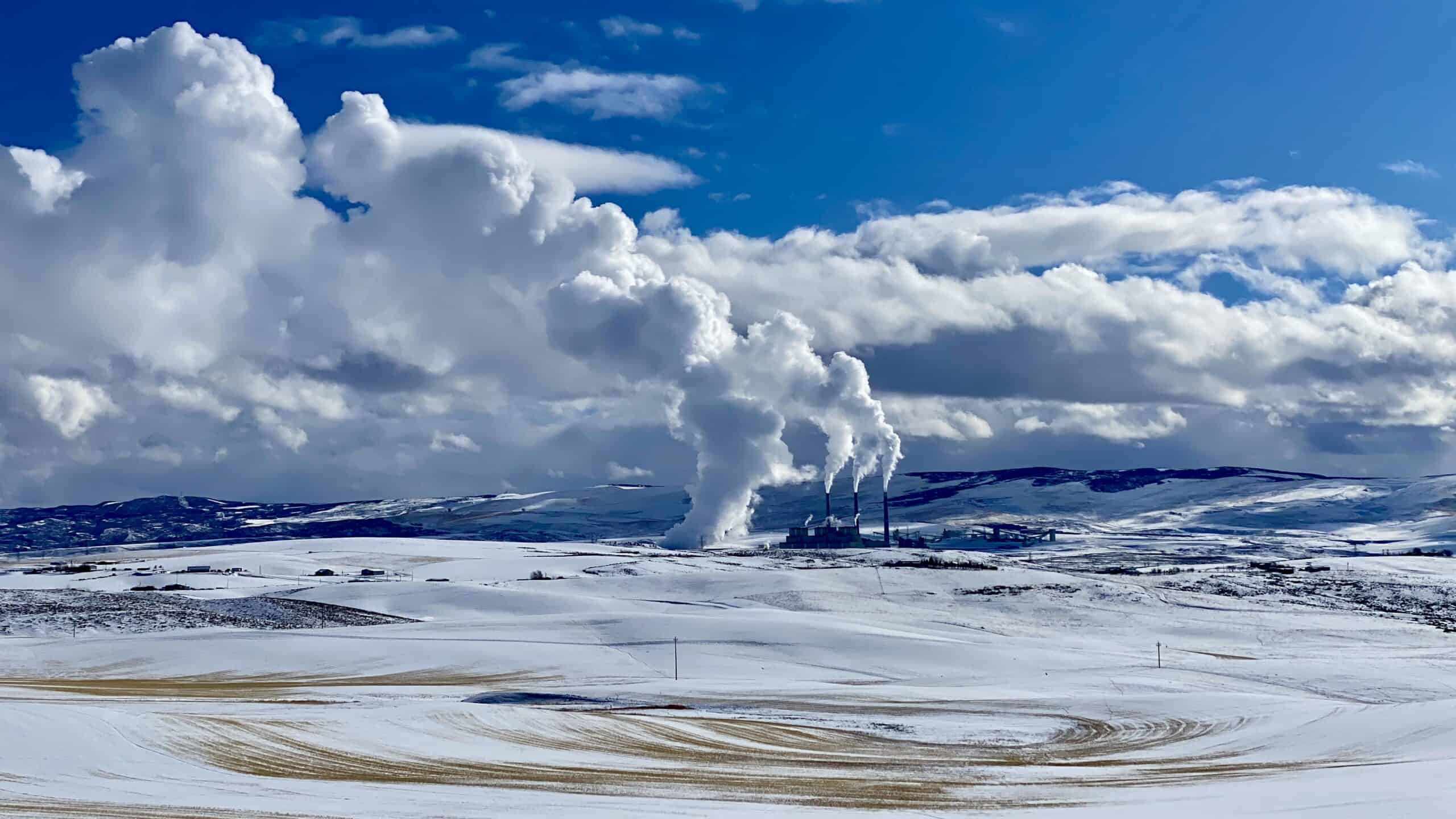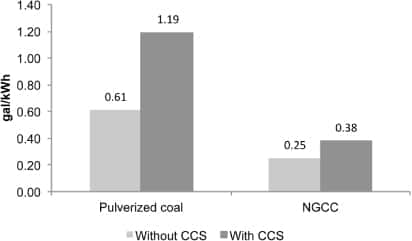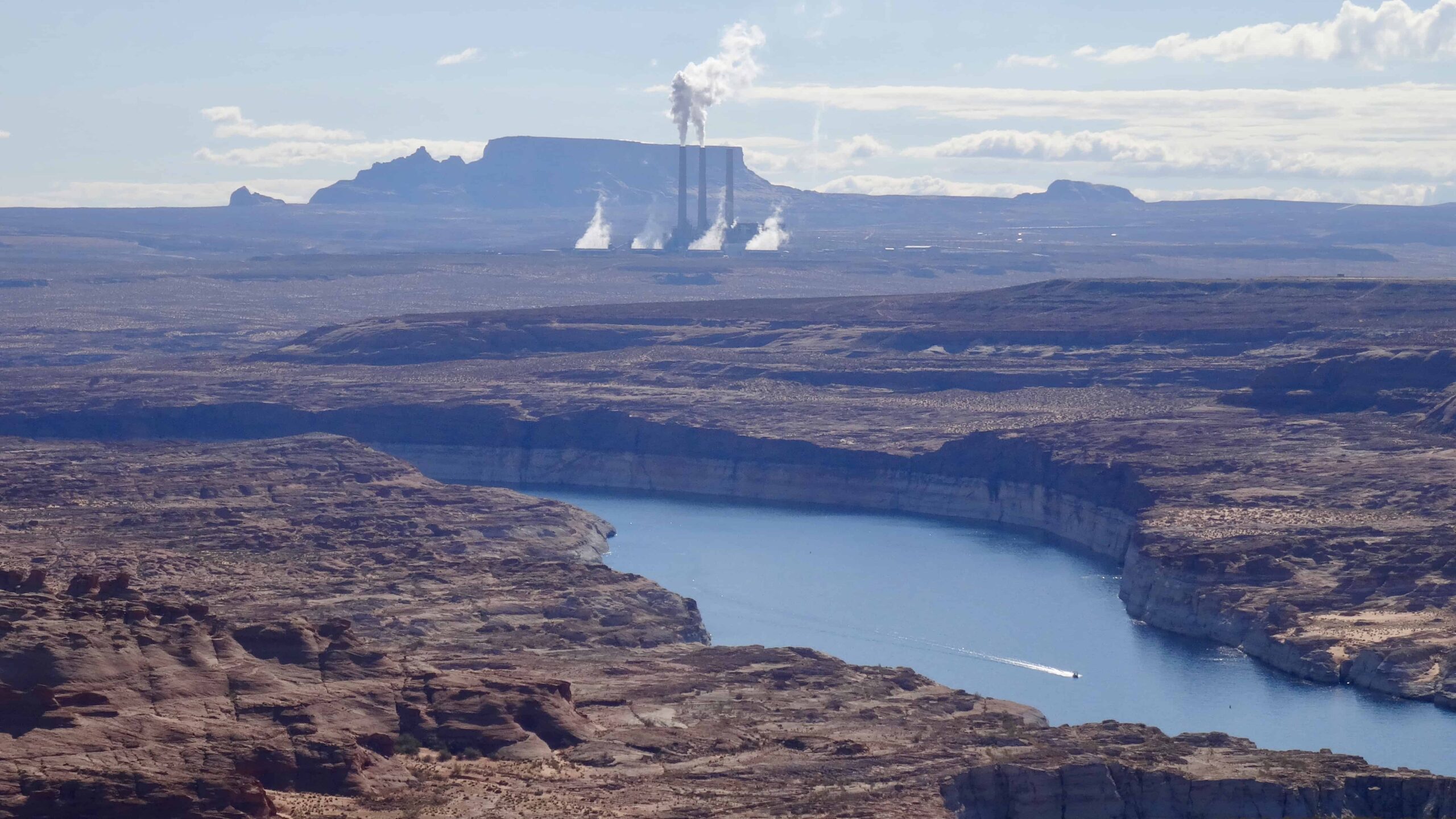Utilities that operate coal plants in the Western U.S. face growing water supply risks

Electric utilities that operate coal plants face growing water supply risks in the western United States, where water is scarce and increasingly threatened by hotter and drier conditions driven by climate change.
That’s the focus of a new Energy and Policy Institute report, which explores the water supply risks facing coal plants in the American West, and the conflicts over water that have arisen between communities and the utilities that own and operate coal plants. Those include legal disputes over water rights between Native American communities and utilities, groundwater consumption by coal plants in Arizona, the impacts of drought on coal plants in Colorado, Montana, and Wyoming, and more.
Several electric utilities have recently announced plans to close coal plants that they operate in order to reduce costs and meet the expectations of their customers, regulators, and investors for a cleaner power supply. Those closures will free up large quantities of water, creating potential economic and environmental benefits while also raising questions about the fate of that newly available water.
But many coal plants in the Western U.S. do not yet have clear closure plans, and the utilities that operate them will continue to face water supply risks and conflicts.
Cumulatively, 30 coal plants in Arizona, New Mexico, Colorado, Utah, Nevada, Montana, and Wyoming consumed more than 370 billion gallons of water between 2014 and 2018, according to data published by the Energy Information Agency. That amounts to more than 76 billion gallons of water each year, or 208 million gallons each day on average.
Combining coal unit water consumption data with coal unit closure dates shows that coal plants in the Western U.S. could consume 886 billion gallons of water between 2020 and 2040. That figure could be reduced as more utilities announce additional coal plant closures, close coal units before their scheduled retirement dates, and operate coal plants less often.
The largest electric utilities in the West warn investors in filings with the Securities and Exchange Commission that drought in the region could disrupt water supplies consumed by their coal plants. For example, New Mexico’s largest utility PNM reported in its 2019 10-K annual report about water risks, including to coal plants that it plans to close (San Juan Generating Station, or “SJGS”) or exit (Four Corners):
Assured supplies of water are important for PNM’s generating plants. Drought conditions in New Mexico, especially in the “four corners” region, where SJGS and Four Corners are located, may affect the water supply for PNM’s generating plants. If inadequate precipitation occurs in the watershed that supplies that region, PNM may have to decrease generation at these plants. This would require PNM to purchase power to serve customers and/or reduce the ability to sell excess power on the wholesale market and reduce revenues. Drought conditions or actions taken by the court system, regulators, or legislators could limit PNM’s supply of water, which would adversely impact PNM’s business.
Several other major utilities in the region provided similar warnings to investors, including Xcel Energy, Arizona Public Service Company, Pacificorp, Talen Energy, Tucson Electric Power, and Tri-State Generation and Transmission Association, which are detailed in the report. Utilities that don’t disclose risks in SEC filings, like Basin Electric and Arizona G&T Cooperatives, have nevertheless faced water supply challenges at their coal plants.
Recent reports by Moody’s Investors Service and BlackRock have also highlighted the growing risks of climate change impacts to electric utilities and the power plants they operate, including water supply risks and drought. Moody’s noted that Rocky Mountain states, the Colorado River region and California are most exposed to water stress and explained that “For electric utilities, water stress is generally credit negative because of the critical role that water plays in the economy and in cooling power plants.”
Carbon capture would double coal plants’ water consumption
While closing coal plants promises to free up water for other needs, installing carbon capture infrastructure on coal plants would nearly double their water consumption, dramatically increasing their water supply risks.
A study on the water impacts of carbon capture and sequestration (CCS) published in Energy, Sustainability and Society notes that “water use (consumption or withdrawals) is almost doubled when a power plant becomes equipped with a CCS technology,” and explains:
CCS installations are expected to impose new water stresses due to additional water requirements for chemical and physical processes to capture and separate CO2. In addition to these processes, the parasitic loads imposed by carbon capture on power plants will reduce their efficiency and thus require more water for cooling the plant.
Carbon capture infrastructure is particularly water intensive when used at coal plants. A study comparing the life-cycle water consumption of coal and gas fired power plants in Texas, published in Environmental Research Letters, shows that installing carbon capture infrastructure would increase cooling water consumption by 95% for coal plants, compared to 75% for gas plants.

Several other studies have also found that carbon capture roughly doubles the amount of water consumed by coal plants, which are reviewed in the report.
The report, “Coal and Water conflicts in the American West,” is available at https://energyandpolicy.org/coal-water/




